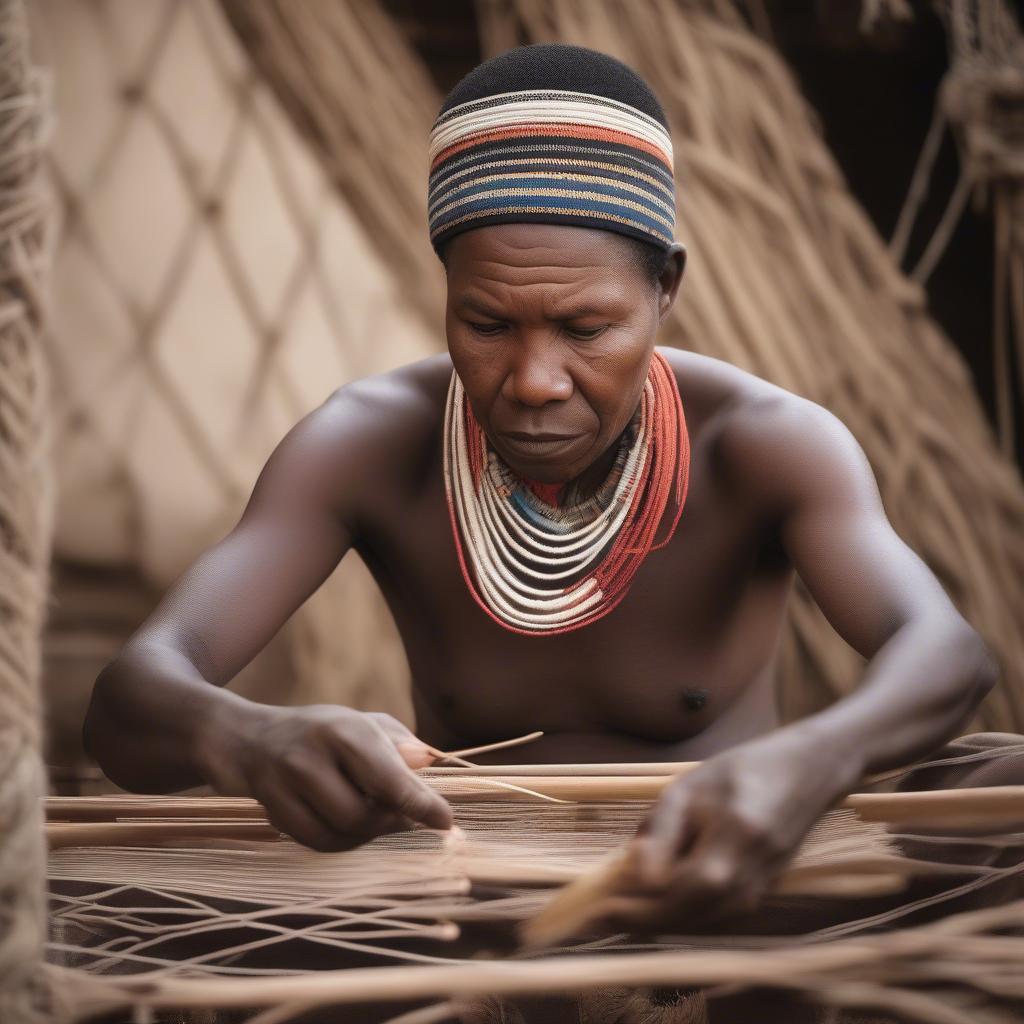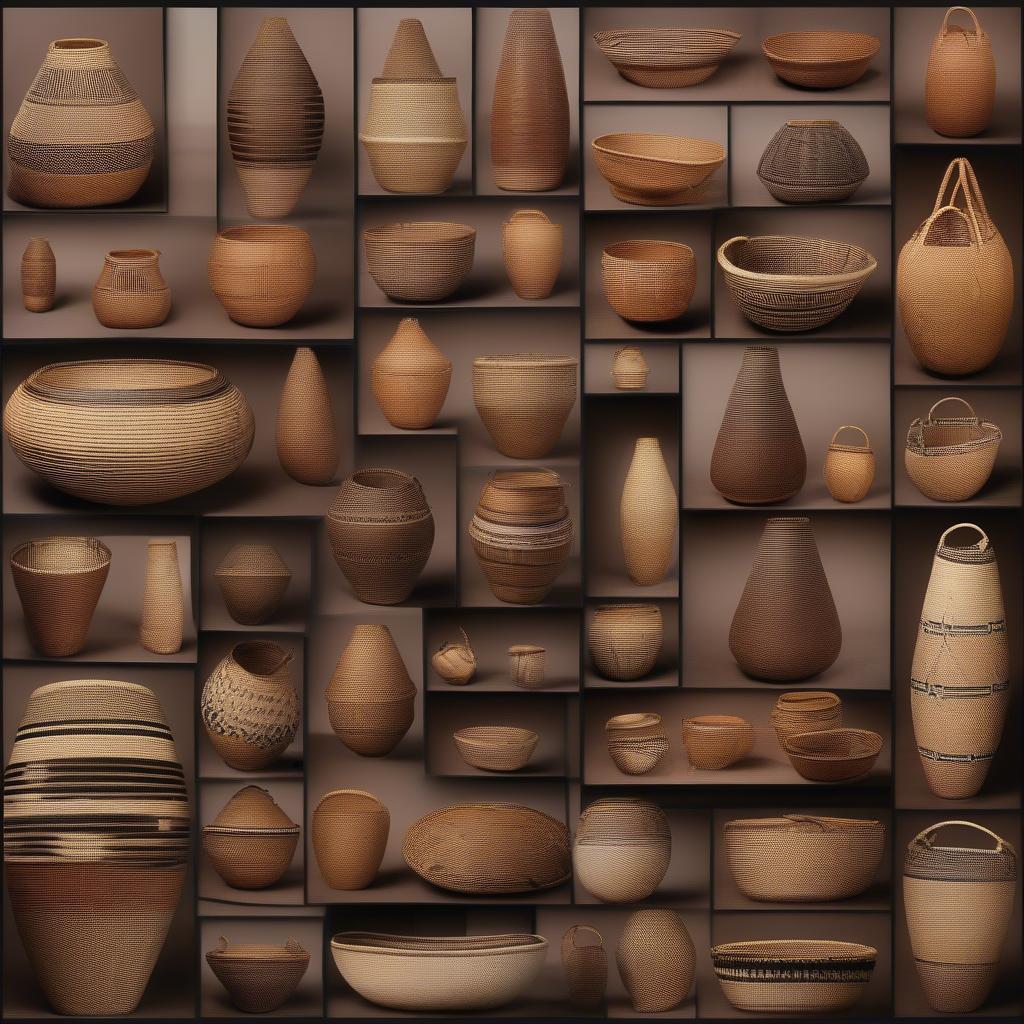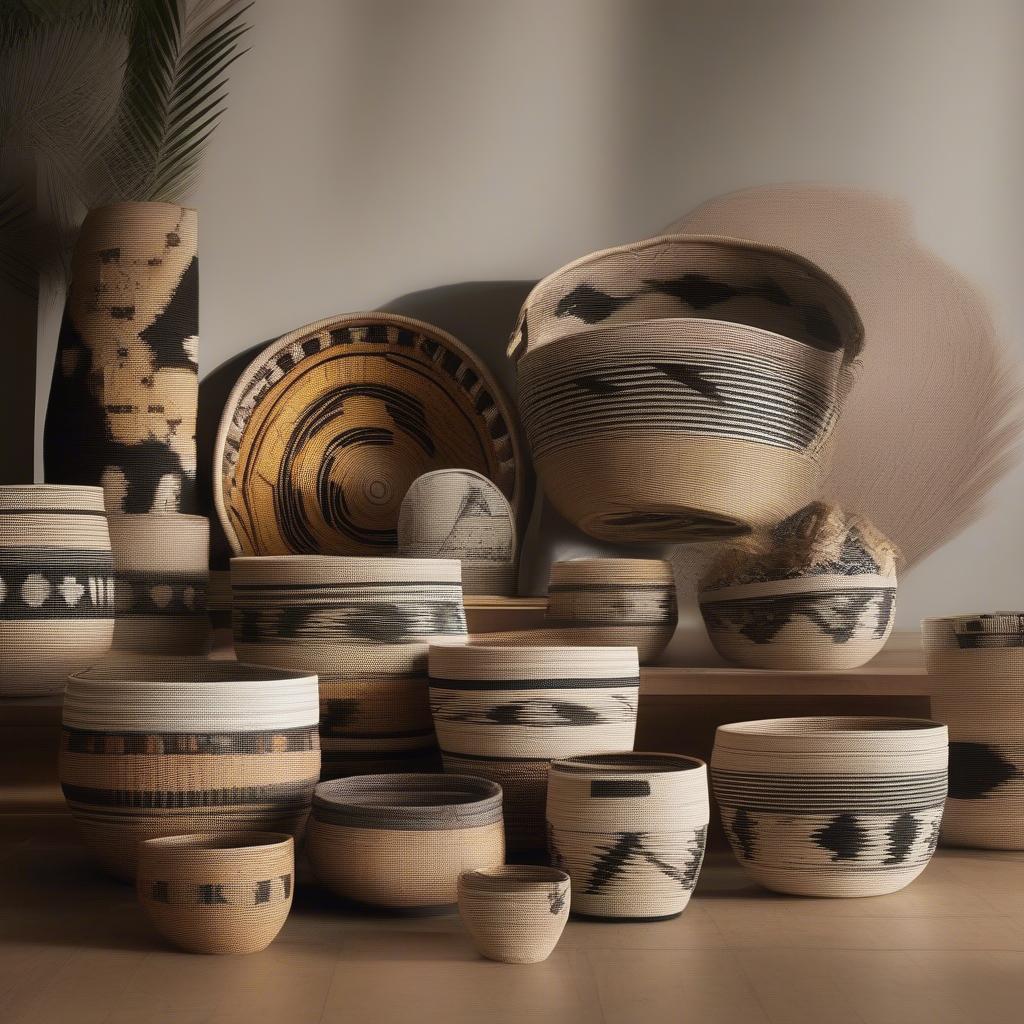Basket Weaving
Discovering the Art of Zulu Basket Weaving
Zulu Basket Weaving is a centuries-old tradition deeply ingrained in Zulu culture. These aren’t just baskets; they’re intricate works of art, each telling a story through its unique patterns and vibrant colors. From their practical uses in daily life to their significance in ceremonies and rituals, Zulu baskets offer a captivating glimpse into the rich heritage of the Zulu people.  Traditional Zulu Basket Weaving Techniques
Traditional Zulu Basket Weaving Techniques
A Legacy Woven in Time: History of Zulu Basket Weaving
Zulu basket weaving dates back generations, passed down through families and communities. Originally serving practical purposes for storing and carrying goods, these baskets have evolved into significant cultural artifacts. The craft reflects the resourcefulness and artistic sensibilities of the Zulu people, using locally sourced materials like ilala palm and telephone wire to create stunning pieces. They weren’t simply containers; they were expressions of creativity, skill, and cultural identity. Over time, distinct regional styles emerged, each with its own unique patterns and techniques.
 Variety of Zulu Baskets – Shapes and Sizes
Variety of Zulu Baskets – Shapes and Sizes
You can find authentic examples of weaved baskets south africa.
The Significance of Patterns and Colors in Zulu Baskets
The patterns woven into Zulu baskets are far more than just decoration; they’re a visual language, communicating stories, beliefs, and social status. Geometric shapes, intricate designs, and vibrant colors all hold symbolic meaning, representing everything from clan affiliations to stages of life. For example, a specific pattern might signify a marriage proposal, while another could represent a chief’s authority. The colors used also carry weight, with certain hues associated with specific occasions or emotions.
Materials and Techniques: From Ilala Palm to Telephone Wire
Traditionally, Zulu baskets were primarily woven from ilala palm leaves, a readily available natural fiber. However, the ingenuity of the Zulu people led to the incorporation of other materials, including dyed grasses and, more recently, recycled telephone wire. This adaptation reflects the evolving nature of the craft while maintaining its core essence. The process is intricate and time-consuming, requiring skillful hands and a keen eye for detail.
 Modern Adaptations in Zulu Basket Weaving
Modern Adaptations in Zulu Basket Weaving
How to Identify Authentic Zulu Baskets
Identifying authentic Zulu baskets requires careful observation. Look for tight, even weaving and consistent patterns. The materials used should be natural fibers or, in some contemporary pieces, telephone wire. Authentic Zulu baskets often have a distinct feel and weight, reflecting the density of the weave and the quality of the materials. Check for signs of handcraftsmanship, such as slight variations in the patterns, which are characteristic of handmade items.
Zulu Basket Weaving Today: Preserving a Cultural Treasure
Today, Zulu basket weaving continues to thrive, both as a traditional craft and as a source of income for many communities. These baskets are sought after by collectors and enthusiasts worldwide, appreciating their artistic merit and cultural significance. Supporting Zulu basket weavers helps preserve this valuable tradition and empower local artisans. You can find beautiful african basket weaving for sale.
Where to Learn More and Support Zulu Artisans
Numerous resources are available to learn more about Zulu basket weaving. Museums and cultural centers often feature exhibits showcasing these beautiful creations. You can also find information online and in books about african basket weave patterns. Supporting fair trade organizations and directly purchasing from Zulu artisans helps ensure that this cultural treasure continues to flourish.
Conclusion
Zulu basket weaving is more than just a craft; it’s a vibrant expression of Zulu culture, history, and artistry. From the intricate patterns to the natural materials, each basket tells a story. By appreciating and supporting this ancient art form, we contribute to its preservation for generations to come.
FAQs
-
What are Zulu baskets made of?
Traditionally, ilala palm leaves, but modern adaptations include dyed grasses and recycled telephone wire. -
What do the patterns on Zulu baskets mean?
The patterns often symbolize stories, beliefs, and social status within the Zulu culture. -
Where can I buy authentic Zulu baskets?
Fair trade organizations and directly from Zulu artisans are the best sources. -
How can I tell if a Zulu basket is authentic?
Look for tight weaving, consistent patterns, and natural materials. Slight variations are characteristic of handmade items. -
Are Zulu baskets still made today?
Yes, Zulu basket weaving continues to thrive both as a traditional craft and as a source of income. -
What is the significance of Zulu basket weaving?
It represents a significant part of Zulu cultural heritage, preserving traditions and stories. -
How can I learn more about Zulu basket weaving?
Museums, cultural centers, online resources, and books provide further information.
When you need assistance, please contact our Hotline: +84 388 951 999, address: Hanoi, Vietnam or Tech Avenue, Suite 12, San Francisco, CA 94105, USA. We have a 24/7 customer service team.
